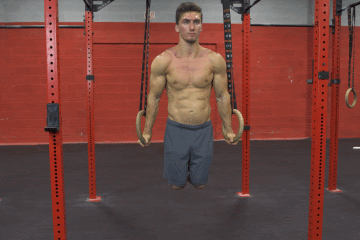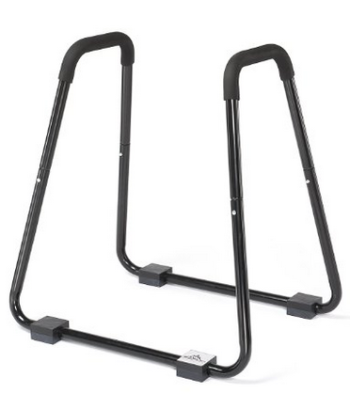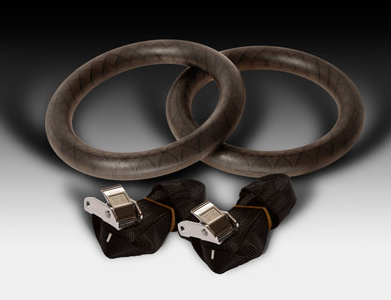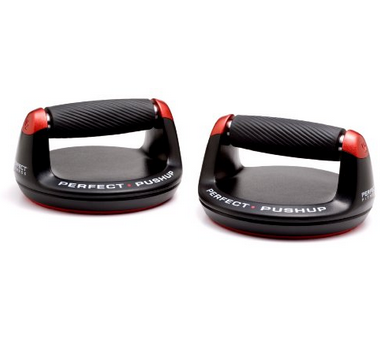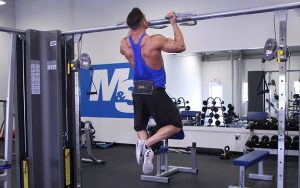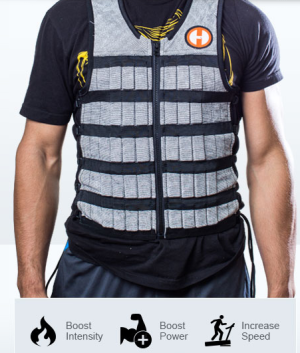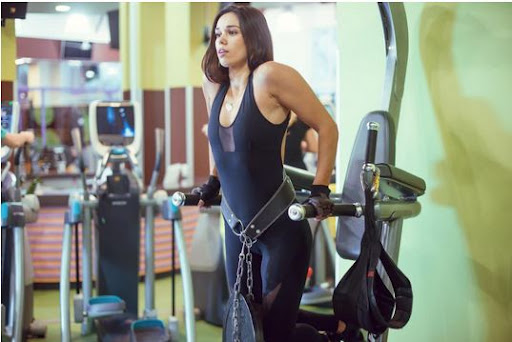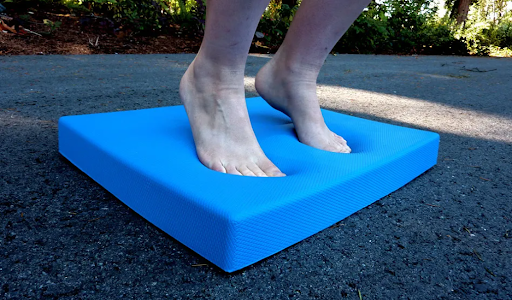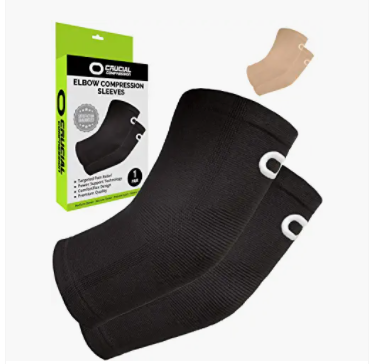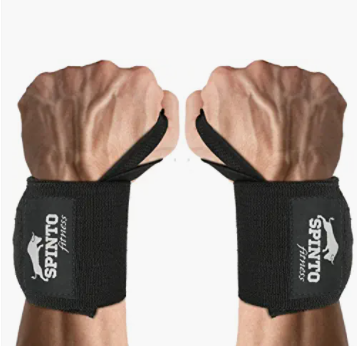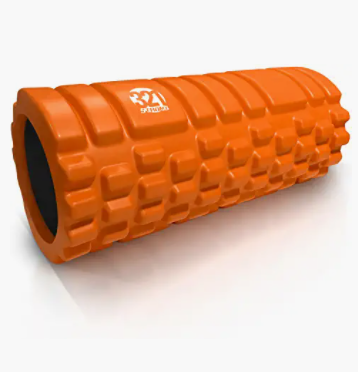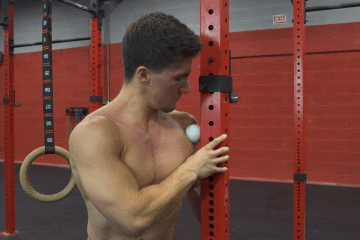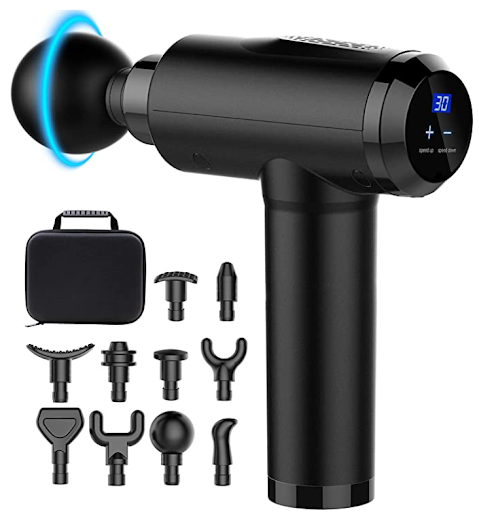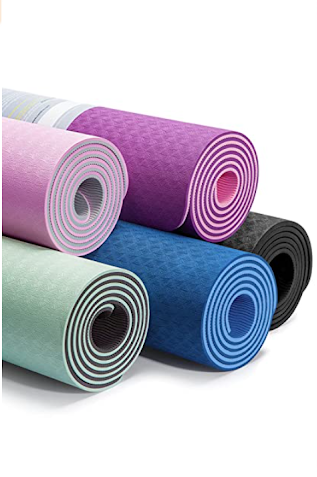
Join the tribe of Movement & Calisthenics Athlete – People just like you that are working with their own body weight to get strength, lose fat build muscle, recover from injuries and live their best lives!
If you’re looking to start a calisthenics workout at home, or are just getting started, it can be hard knowing what equipment you need. The good news is that there are only 7 pieces of equipment that are essential for your home gym! We’ve compiled this list to make sure you have everything on hand for the best possible workouts.
Why build a calisthenics home gym in the first place?
You might be thinking, “why on earth would I look for any calisthenics workout equipment if the reason why I chose to train calisthenics is to train with NO EQUIPMENT?!?!!?”
For most fitness goals, home workouts don’t need equipment but for convenience, for getting the most out of your workout, or for specified training, you would want to have these 7 must-have pieces of equipment.
Here are also better explanations why you would want to get these pieces of equipment ASAP!
Gym memberships are expensive
This one is straightforward. Gym memberships are expensive overtime. You have to renew them monthly or annually. The fees never end. Plus there’s also the cost of gas (and/or time) when commuting to the gym.
You can also build your own gym at your own home, but traditional gym equipment is expensive. Building your own home calisthenics gym will still be far more affordable and easy to complete.
More variety of calisthenics exercises
Essential calisthenics equipment widens the variety of exercises you can do. There are some exercises that are just better done on minimal calisthenics equipment than none. If you want to get more variety with your workout, getting some equipment is a great option.
Creates effective progressions
Dips on gymnastics rings are an amazing progressive exercise once you have mastered the regular dips.
Good calisthenics workout induces progressive overload. You might get stuck with some of the progressions if you lack some equipment. How can you get better with pull-ups if you don’t have an any form of pull-up bar?
Training equipment also can force faster progress by further adding resistance. A good example is the video above. Once you have mastered dips, progressing with pure bodyweight will be quite limited with the exercise so moving to the ring dips is an excellent choice for progressive overload.
Let’s run through the must-have calisthenics equipment so you can easily progress through your calisthenics journey in a better, safer, faster way.
No need for any expensive gym memberships. Just minimal equipment for complete calisthenics workouts in the comforts of your own home.
Calisthenics equipment you need
Pull-up Bar
One of the most crucial and fundamental bodyweight exercises is the pull-up and its progressions. It’s best for building back muscles and biceps as well. It’s a must-do exercise to get a well-balanced physique that is free of aches and pains.
Although pull-ups can be done almost anywhere as long as there’s something elevated that can hold your full body weight, it’s ideal to include a pull-up bar in your home gym.
Getting a pull-up bar provides a good comfortable grip so you can focus on exercising the target muscles properly.
There are many forms of pull-up bars, but the most affordable and easy to install is a screw-on doorway pull-up bar. pull-ups doorway
With the pull-up bar, you can easily train other exercises as well as muscle-ups, straight bar dips, bodyweight rows, nordic curls. You can also hang resistance bands or gymnastics rings on the bar to extend the list of bodyweight exercises you can do. Of course, this depends on the type of pull-up bar you get, but this, with no doubt, is a vital piece of equipment you can get for your home gym even if you DIY it or get the cheapest in the market.
Pull-up bar prices vary widely depending on the type of bar you want to get. The most affordable you can get, as mentioned earlier, is the doorway pull-up bar. The higher the price, the more features are included such as a squat rack, power rack, power tower with dips, and more.
You can do pull-ups on tree branches, house support beams, and anything sturdy, but nothing beats your regular pull-up bar that’s really meant for pull-ups. Also, be sure to know the weight limit of your bar especially if you’re into adding weight vests to your calisthenics training.
PROS
- Many options from screwless doorway pull up bar to power tower to a heavy-duty power rack
- A versatile piece of calisthenics equipment: You can do back levers, front levers, hanging core exercises, pull-up variations, and grip exercises
- Very accessible and affordable
- Doesn’t take so much space depending on the workout equipment variation
CONS
- Doorway pull-ups may limit your leg position so you have to bend your legs or hips to perform pull-ups
- You should be open to drilling in the screws for more stable pull-up bars
- Pull-up bars with many inclusions such as a power tower or power rack can be costly
Dip station
Dips are calisthenics fundamental to build muscle and strength for the chest, tricep, and shoulders. That’s why another must-have calisthenics equipment is a good dip station. You can learn the dip progressions here.
Dip stations come in different shapes and sizes. You can get portable dips stations that can act as parallettes or more stable variations such as a power tower that usually has a pull-up bar included.
Dip bars simulate the parallel bars of the gymnastics world. Other than dips, you can also train many exercises on that piece of equipment such as handstands, planche, or L-sits in a more “wrist-friendly” position.
Although you can work with two sturdy chairs to perform dips, it’s still best to get dip bars so that you won’t get limited by the extended wrist position. Get more reps for your chest, triceps, and shoulders.
Like pull-up bars, be sure that the maximum load can handle your weighted vest for weighted variations.
PRO
- Neutral wrist position allows focusing more on the targeted muscle group
- Many other exercises can be done on the equipment and can be used as parallettes
- Accessible and affordable
- Comes in many variations for different price ranges
- Offers the best equipment for safe and effective dips
- Portable dips are easy to adjust for the grip width
CONS
- Can be bulky
- You need to find a good quality dip station that is stable enough
Gymnastics rings
If there’s one piece of home gym equipment you can only get, then the gymnastics rings should be your go-to!
This single piece of calisthenics equipment will serve you for literally a plethora of exercises and make them more scalable to build upper body strength for a wider range of skill levels.
With the very obvious adaptation from gymnastics, the most popular exercises done on rings are usually the most basic movement patterns of calisthenics. You can perform your regular push-ups, bodyweight rows, pull-ups, and dips on it but with added difficulty.
Gymnastic rings are free to move as you use them, there’s an added factor of instability which makes the exercises much harder. For example, in order to perform push-ups, your upper body plus core should be able to stabilize itself on the rings first. This is the reason why gymnastics ring training is usually considered as an intermediate level. Master your basics first before attempting the basics here (except for the bodyweight row). This holds especially true when you perform ring dips which feels like a massive jump from the regular dips.
From the basic movements, the free movement also allows you to vary the grip position and ring height which can also change the muscle groups you are focusing on. For example, instead of doing bodyweight rows with a pronated grip, you can shift into a supinated position to target your biceps to simulate bicep curls. This is an excellent alternative for dumbbell isolation exercises if lacking the equipment for it. At the same time, you can easily adjust the strap height to adjust the difficulty of the exercise (Lower rings = more challenging, higher rings = easier).
The best calisthenics exercises and almost every calisthenics movement can be done on rings which is why you should get a pair. You can build muscle, improve strength, learn skills, and train your mobility in this single piece of calisthenics equipment.
Gymnastic rings can be used for beginners as well given the context and the exercises to be used, but it’s more ideal for intermediate to advanced calisthenics practitioners. Gymnastics rings will give you a long time to work on.
We highly recommend rings from Ringtraining.com and we use them personally. They are awesome, especially because of the superior grip. Check them out here.
PROS
- Can progress many upper-body exercises to a more intense difficulty
- Very scalable through adjusting ring height, angle, and body positions
- VERY affordable and accessible
- Set-up is easy and can be placed almost anywhere sturdy
- Can fit in your luggage
CONS
- Fundamental exercises such as push-ups, dips, pull-ups are not beginner-friendly. Consider mastering the basics first if you want to get into gymnastics rings training HOWEVER you can already use it for other exercises such as bodyweight rows or face pulls.
- It can be a bit of a hassle adjusting the rings when moving into a different exercise
Parallettes
Parallettes are like mini dip bars that simulate the parallel bars on gymnastics but are closer to the floor. They are handy to have since it opens up to other options of exercises for your calisthenics training.
A good example is when mastering the handstand push-ups. Doing the exercise on this piece of equipment allows you to get a deeper range of motion. This increase in ROM translates to increase strength gains which have good transferability to other advanced skills such as the 90-degree handstand push-up.
Aside from that, the elevated arms allow you to move your lower body easily for other skills and transitional skills. A good example is when you’re still learning the L-sit. You can maintain your legs a bit lower when first developing the mobility and strength to hold the full L-sit with a completely horizontal leg position.
PROS
- Alleviates pressure on the wrist due to the wrist extension for many floor exercises
- Increases the range of motion due to the elevation
- Easy to make a DIY version
- Makes some transition combination movements easier, for example, L-sit to handstand
CONS
- Learned skills on parallettes don’t always fully transfer on the floor. If you want to learn it on the floor, learn it on the floor.
- Good dip bars can already act as your parallettes
Chalk
If you really want to progress with your pull-ups, you have to get some chalk on your hands.
Where just humans and our hands do sweat. And for some individuals who sweat a bit more on their hands than the average person, then pulling on the bar will get limited by the grip. No matter how strong you get, you’ll be limited by the sweat.
Prevent this limitation and put chalk on your hands! This is for pull-ups and for other pulling movements such as levers and bodyweight rows.
Especially if you’re a calisthenics athlete who enjoys weight vests in your home gym for your pull-ups, get chalked!
The only downside is the clean-up but you can easily opt for the liquid chalk version instead of the powdered form. No mess and gets the job done.
PROS
- Adds grip to remove the limiting factor of sweaty palms especially for hanging exercises
- Allows maximum control with hands for hand balancing movements
CONS
- Powdered chalk can be a hassle to clean
- Liquid chalk is relatively expensive
Weights
To keep on improving in training, we need to keep applying progressive overload. There are many ways to keep calisthenics progressive and one of them is through adding weights.
Calisthenics doesn’t necessarily mean it should only be bodyweight. You can implement weighted calisthenics which requires less equipment than a regular weightlifting home gym.
Adding external resistance to your regular bodyweight pulling exercises and pushing exercises will push them to another level. Instead of just improving relative strength, we also get to develop absolute strength which transfers well to learning strength-based calisthenics skills such as the planche and one-arm pull-up.
Add weight depending on your skill level. Don’t get overzealous in adding too much weight no matter how strong you are.
Also, be sure to master the fundamentals first before training with harder variations.
Check the weight capacity for your pull-up bar or parallel bars if it can handle your target weight.
Weights turn bodyweight exercises into a beast strength workout that can also build muscle size. It’s an excellent option for intermediates and advanced athletes.
There are two options you can work with for weighted calisthenics:
Weighted vests
A good option to have is a weight vest. The weight distribution simulates your body weight so it’s safe unless the weight is too heavy for you. It also doesn’t limit your movement due to the positioning of the weights.
Weighted vests offer resistance exercises that are scalable by removing the weight packs from the vest.
Dip belt + weight plates
If you want to scale your calisthenics exercises to a different level, this combo is your solution.
Dip belt plus weight plates are a solid choice for unlocking an unlimited amount of absolute strength. You can easily add weights with no limitation as long as your dip belt, workout station, and your body can control it.
Get an even more intense workout with gymnastic rings with a dip belt and weights combo.
The downside to this is if you don’t know the proper placement of the dip belt for some exercises. An example is weighted pull-ups. You need to wear the dip belt around your lower chest or your chest to get a better and safer weight distribution for the exercise.
PROS
- Very scalable approach to building absolute strength
- Strength transferable to calisthenics skills
- Straightforward way to progress
CONS
- Can be expensive when adding more weights
- Prone to ego lifting
Resistance bands
Bands are an amazing tool to progress or regress many exercises in calisthenics.
Resistance bands offer both resistance and assistance depending on how you will use them.
Anchor it on a pull-up bar then you can now use it to assist you to complete the range of motion of pull-ups as a beginner. Same set-up even allows you to progress from different planche progressions or lever progressions when placed around your hip area.
It can be used for warm-ups, muscle pre-activation, act as resistance for push-ups, assistance for ab wheel and so much more. It’s such a versatile tool.
Each resistance band is different choose the resistance band that accommodates your skill level so it’s best to get a set.
If you’re dedicated to training calisthenics, no matter what are your fitness goals are, bands are a must-have.
PROS
- Can both increase and decrease the intensity of exercises depending on what is needed
- Amazing bridge for calisthenics skills that has huge gaps such as tuck planche to advanced tuck and more
- Safe way to progress strength for basic calisthenics exercises such as pull-ups and dips
- Easy to set-up
- Lightweight, compact, very easy to store
CONS
- Amount of assistance or resistance can vary depending on the position. For example, when doing pull-ups, the amount of assistance lessens at the top position
- One band is usually not enough. Get a set
- Resistance bands assistance/resistance isn’t straightforward unlike weights.
Honorable Mentions
Although not mandatory for general fitness goals, these equipment are also good options to have to achieve specific requirements and goals.
Unlike the seven must-have pieces of equipment, the honorable mentions are more easily replaceable and do not offer the superior benefits of having the former set of equipment.
Check them out and see if they can still be of use to you as it’s not that bad to have especially if you enjoy using them.
Sliders
There are some calisthenics movements that need you to slide your hands or feet across the floor. Examples of these exercises are hamstring curls, tuck planche slides, push-up to pike slides, and much more.
It’s very convenient as you can easily glide across many floor surfaces. Sliders usually have two types of material for each side to accommodate multiple surface constructions.
Although convenient, this fitness equipment can easily be replaced especially if you already have a smooth floor.
PROS
- Making sliding on a surface easier
- Convenient as it doesn’t scrunch up like a cloth
CONS
- Can easily be replaced by socks or a smooth-textured piece of clothing
Soft padding
The phrase “No pain, no gain” is commonly taken out of context. Especially when doing exercises where you have to put your knees on the floor, getting comfortable is a priority.
Why? For example, when doing reverse nordic curls, the goal of the exercise is to improve the strength, mobility, and muscle of the quadriceps by moving through the range of motion; not getting rock-solid knees that can stand extended periods on a hard surface. You want to get comfortable in doing the movement pattern intended for the exercise. The hard floor could be a limiting factor for you to meet the necessary volume for you to stimulate your quads enough.
You don’t always have to experience pain to grow.
Keep in mind that the soft padding isn’t ideal for handstand training. Stick to the good, hard floor to get responsive feedback when balancing.
PROS
- Keeps certain positions comfortable so you can focus on targeted muscle groups
CONS
- Usually absorbent of sweat so you have to regularly clean it to avoid the “gym smell”
Gloves
If you don’t like using chalk or hate the callouses formed through pulling exercises, it’s worth investing in calisthenics gloves.
Long time on pull-up bars develops callouses especially for when you go into weighted calisthenics. It’s an adaptive characteristic of your body so it doesn’t get hurt during pulling exercises. However, not everyone is a fan of having these on their hands.
Get a pair of calisthenics gloves to keep your hand mobile while providing you a good grip even if your palms become sweaty.
PROS
- Better grip
- Substitute for chalk
- No callouses or blisters
- No mess from chalk
- Additional wrist support and stability
CONS
- Needs to be regularly cleaned to avoid foul odor and bacterial growth
- You can be dependent on them
Elbows sleeves
Compression sleeves, particularly elbow sleeves since we’re mostly working on the upper body, do offer many benefits that are already backed up with research, however, there are caveats to how the sleeves are worn to maximize their use. Such as wearing them 12 hours post-workout. It’s also worth mentioning that it isn’t the main facilitator for recovery but it can help by improving blood flow and stabilizing muscles.
There are also other notable methods to prevent DOMS while improving the recovery rate. More on this topic here: How to Avoid Muscle Soreness and Recover Faster
Elbow sleeves are also good for protecting your arms from gymnastics ring strap rash which you can get from training your ring dips.
PROS
- Assist in muscle recovery
- Reduce effects of muscle soreness post-workout or DOMS
- Barrier against ring straps for your skin
CONS
- Correct general guidelines on how to use them should be implemented
- Can be expensive
- Need to clean and sanitize regularly to avoid bacterial growth and foul odor
- Can be uncomfortable to wear especially for extended periods of time
Wrist wraps
Many calisthenics exercises put a high demand on the wrists which is why it’s easily prone to abuse and injury. While there’s a study conducted on gymnasts that wrist wraps with braces are effective for wrist pain management, their situation isn’t comparable to a regular fellow training with calisthenics.
For gymnasts, they literally push their bodies to the limit every day with high volume, high-intensity exercises, and skills. The average calisthenics trainee wouldn’t come near to the same demand even as an amateaur-level gymnast.
The best way for us regular folks is to train sustainably with progressive overload spread out at a longer period of time.
If you’re training a lot with your wrists like with handstands or planche, addressing wrist weaknesses and give time for your body to recover.
PROS
- Excellent for wrist pain management
- Adds additional support on the wrists
CONS
- Won’t be necessary for most cases
Ab wheel
Developing a strong core is a must for calisthenics and for everyday life and function. Nothing beats the gains you can get from training with the anti-extension function of your core through the ab wheel.
The ab wheel seems like a very demanding exercise on your abdominal muscles. It is, but you can always work through the ab wheel progressions until you can get to the full exercise.
You can also get creative with this equipment as a beginner so you can already begin with the ab wheel. Here are other potential progressions:
- Limit range of motion by training in front of a wall
- Kneeling variation
- Negatives
- Band assisted variation
PROS
- Excellent core strength development
- Helps build 6-pack abs
- Transferable core strength to many calisthenics skills and everyday movement patterns
- Very scalable from beginners to the most advanced athletes
- Same movement pattern can be used on a barbell or rings for a more shoulder-friendly approach
CONS
- Can be taxing on the lats and shoulders
- Requires a good shoulder mobility
- Absolute beginners can work on easier core stabilizing exercises
Foam rollers
Foam roller is basically a tool for self-massage They aren’t necessary but can provide help in myofascial release. Another thing similar is massage balls which work the same way, but covers less surface area, but are more targeted compared to foam rollers.
Foam roller can help increase mobility by increasing the pain tolerance on a targeted area. Research shows that effects on range of motion and recovery exist, it’s rather minor and currently temporary. No long-term studies are done with foam rolling.
If you opt for using foam rollers, be sure to accompany it with the proven mobility work to ensure results.
PROS
- Temporary increase of range of motion
- Decreases perceived pain
- Help assist in muscle recovery
CONS
- No long-term studies conducted
- Results are relatively minor considering the time you have to put into foam rolling
Massage gun
As the name suggests, massage guns are used electronic handheld devices that are gun-shaped used to massage the body to unlock muscle-knots, improve blood flow, help prevent DOMS (delayed onset muscle soreness), and improve range of motion without losing muscle performance. It’s a self-massage tool and you don’t need much effort compared to using massage balls.
With massage guns, you can effortlessly apply consistent pressure and adjust the intensity depending on massage gun features.
PROS
- Prevent symptoms of post-workout muscle soreness
- Improve range of motion
- Portable and handy for most cases
CONS
- Can be expensive
- For better results, assistance from a physiotherapist is ideal
- You can injure yourself if not done correctly
- Pain relief can be temporary if the exact issue is not addressed
Jump ropes
In recent times due to the pandemic, jump rope has been one of the most popular forms of cardiovascular exercise if you’re aiming for fat loss.
Beginners can easily learn the most basic form while staying effective for losing weight. You can easily jump rope from anywhere, and you can add other features for your rope such as added weight, speed rope, and more.
Jump rope has also become more popular nowadays thanks to many jump rope trickers on massive social media platforms such as Tiktok and Instagram. People don’t only jump with a jump rope. They now “dance” to a beat while avoiding tripping over the rope with finesse!
PROS
- Improves cardiovascular health
- Many variations and fun ways to train with
- Strong option for burning calories
- Develops speed, coordination, timing, rhythm, and stamina
CONS
- Exercise is preferential
Yoga mat
Many calisthenics exercises are done on the floor which is why it’s best to keep it prepared according to your needs.
Usually, exercises require a hard floor for good feedback while keeping it grippy even if you get sweaty. This is when the yoga mats come in.
There are many materials of yoga mats you can avail of, but most of the time, you would want that provides good grip, just enough cushion (not too much), and is easy to clean up.
You can do your cool-down stretches on your yoga mat as well as the main bulk of some of your exercises such as push-ups, core work, and handstands.
PROS
- Provides additional grip even when sweaty
- Can insulate from the cold floor
CONS
- Could provide too much cushion which can be dangerous for your wrists
- Not necessary equipment
Conclusion
Whether what you have, there’s always a way to train with calisthenics towards your fitness goals.
Yes, you can train calisthenics with no equipment at all or use alternatives for the pieces of equipment but it’s hard to pass up the convenience you can get with the 7 top calisthenics equipment, especially if they are very affordable and accessible anyway.
We highly recommend them especially if you want to progress better through the calisthenics fundamentals to get a balanced, mobile, strong, and capable body that looks good as it functions.
If you need help with your calisthenics fundamentals, we highly recommend following a personalized training program so you can get the most out of your workouts.
To begin your personalized journey, let’s first know what your body is capable. Here’s a short assessment so you can start the right way.
TAKE THE ASSESSMENT NOW!

